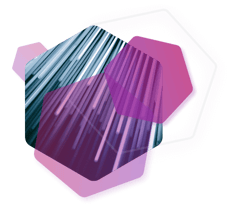 When business and technology are aligned, achieving business goals becomes more manageable. The concept of alignment often bridges the gap between knowledge, skills and communication. Thus, creating an environment where everyone works towards the business strategy. Quite often overlooked, this alignment creates a business environment where everyone works towards the same goals, creating more efficient teams working towards long-term strategic objectives and an organisation where development understands the operational context of the project, helping spot potential roadblocks early on.
When business and technology are aligned, achieving business goals becomes more manageable. The concept of alignment often bridges the gap between knowledge, skills and communication. Thus, creating an environment where everyone works towards the business strategy. Quite often overlooked, this alignment creates a business environment where everyone works towards the same goals, creating more efficient teams working towards long-term strategic objectives and an organisation where development understands the operational context of the project, helping spot potential roadblocks early on.
How can this be done?

Eliminating Silos and aligning teams to strategic business goals

While teams focused on the technology side of the business have evolved rapidly over the last few years, technology adoption has not always translated into streamlined business processes. Silos in development are often formed due to technical goals being at the front of mind, which don’t always align to the broader strategic goals set within the business. In addition, the lack of information sharing across teams takes a toll on transparency, with Silos creating a structure of individual goal setting rather than working towards organisational objectives. This can lead to a lack of efficiency.
Breaking down Silos often includes taking steps to shift employee attitude and culture. Momentum can then be created through a collaborative mindset within every department. This mindset can be created by:
- Sharing business goals related to team effort
- Designing shared metrics
- Establishing transparency and better collaboration between teams
Technology-led business evolution

Technology evolution has transformed how business is conducted over the last few decades. With technology continuing to evolve, it’s likely more innovation will come. Companies that can quickly adapt to new tools and technology will meet the needs of a continually changing marketplace.
Ubiquitous Language

Ubiquitous Language is the practice of building up a common, rigorous language between developers and users. In Domain Driven Design, it exists within a Bounded Context that itself forms part of a wider Context Map of bounded contexts. This creates a model-based language within the business that is complete and comprehensible, using simple elements that combine to express complex ideas. It also helps with the subtle difference within different Bounded Contexts where the same terms may have different meanings. Paying attention to how we describe concepts helps bridge the gap between the various silos in the business.
Closer collaboration

As mentioned previously, communication is key to aligning business and technology goals together. A significant factor is creating closer collaboration and relationships between the two. Adopting new technologies and developing technology roadmaps needs buy-in from senior management. The first step is identifying the key areas within the roadmap that will align with the business goals. These areas can take priority and begin to educate developers on where the effort needs to be focused. Closer collaboration needs to be continuous, ensuring efforts remain focused on the business goals and allow development teams to get faster quality feedback.
Faster quality feedback

Feedback loops are crucial when aligning development objectives to that of the business strategy. Engineers can only safely move as fast as their comprehension of how a change impacts a system. Therefore, the longer the feedback cycle the longer it takes to fix an issue. Delayed feedback may also result in overcorrection based on previous “stale” feedback. Gaining both positive and negative feedback around the software development process allows software development teams to understand the impact their work has around the business objectives, allowing them to create efficiency in the right direction.
Technology-led business evolution

Technology evolution has transformed how business is conducted over the last few decades. With technology continuing to evolve, it’s likely more innovation will come. Companies that can quickly adapt to new tools and technology will meet the needs of a continually changing marketplace.


 When business and technology are aligned, achieving business goals becomes more manageable. The concept of alignment often bridges the gap between knowledge, skills and communication. Thus, creating an environment where everyone works towards the business strategy. Quite often overlooked, this alignment creates a business environment where everyone works towards the same goals, creating more efficient teams working towards long-term strategic objectives and an organisation where development understands the operational context of the project, helping spot potential roadblocks early on.
When business and technology are aligned, achieving business goals becomes more manageable. The concept of alignment often bridges the gap between knowledge, skills and communication. Thus, creating an environment where everyone works towards the business strategy. Quite often overlooked, this alignment creates a business environment where everyone works towards the same goals, creating more efficient teams working towards long-term strategic objectives and an organisation where development understands the operational context of the project, helping spot potential roadblocks early on. 








